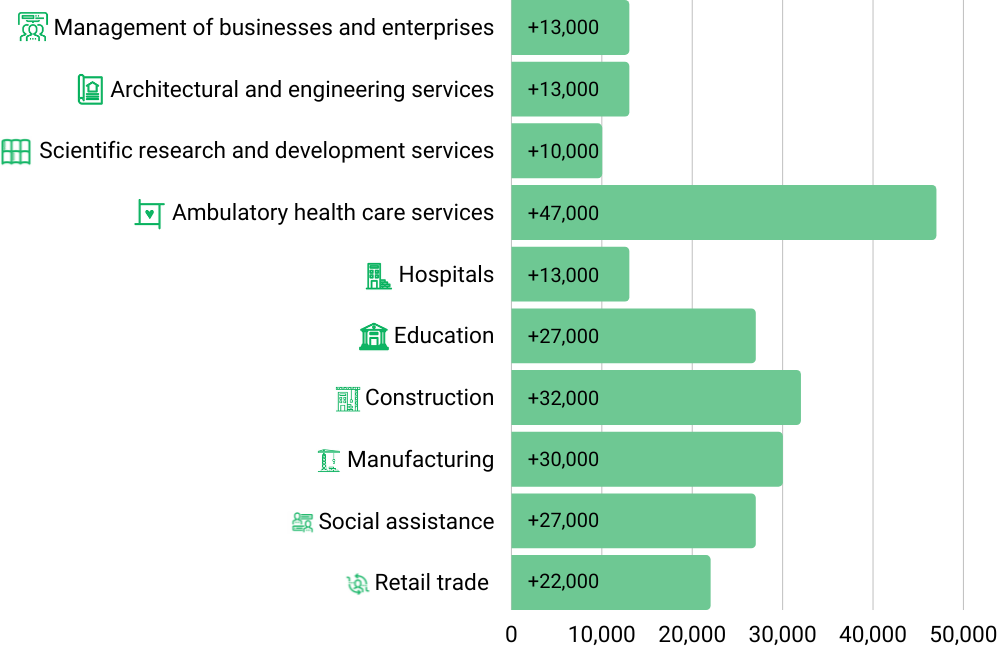Employment Statistics
2023
The second quarter of the U.S. labor market was marked by robust and consistent job growth. Nearly all sectors have recovered their employment levels as a result of broad-based job growth, but some have done so faster than others and now have employment levels that are higher than they were before the pandemic.




